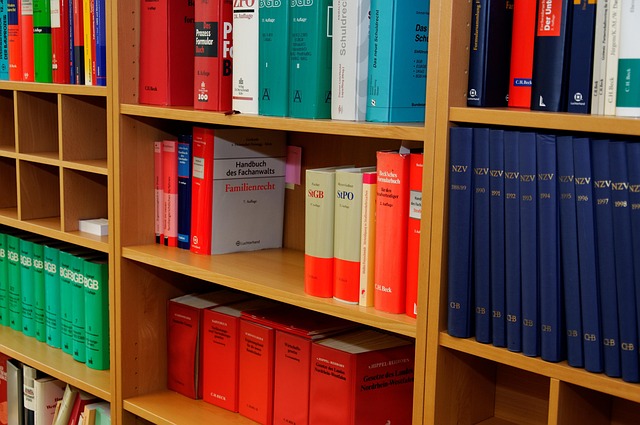Protect Your Interests: Navigating Pedestrian Accident Settlement

Knowing your legal rights and gathering comprehensive evidence are crucial for effectively navigatin…….
In an increasingly urbanized world, ensuring pedestrian safety has become a critical aspect of city planning and development. Pedestrian accident settlement refers to the process and mechanisms in place to address and resolve incidents involving pedestrians, often resulting from accidents or mishaps within public spaces. This comprehensive article aims to dissect this intricate topic, exploring its various facets, global implications, and the strategies employed to create safer environments for foot travelers. By delving into these aspects, we can gain valuable insights into enhancing urban mobility and reducing pedestrian-related incidents.
Definition: At its core, pedestrian accident settlement is a legal and administrative process designed to address and compensate victims of pedestrian accidents. It involves a series of steps, including incident reporting, investigation, liability determination, and subsequent financial settlements or judgments. The primary goal is to provide justice and support to affected individuals while fostering a culture of accountability and safety.
Key Components:
Incident Reporting: Pedestrians or bystanders involved in an accident are responsible for promptly reporting the event to relevant authorities. This includes contacting emergency services, filing police reports, and documenting the incident.
Investigation: A thorough investigation is initiated to gather evidence, interview witnesses, and assess liability. This process may involve traffic cameras, security footage, medical records, and expert opinions.
Liability Determination: The responsible party or entity is identified based on factors such as negligence, infrastructure design, vehicle/pedestrian interaction, or adherence to traffic rules. Liability can rest with drivers, property owners, local governments, or a combination of these.
Settlement or Judgment: Upon determining liability, the affected pedestrian may pursue compensation through negotiations or legal proceedings. This can result in financial settlements, court-ordered damages, or both, to cover medical expenses, pain and suffering, lost wages, and other related costs.
Historical Context: The concept of pedestrian accident settlement has evolved over time, reflecting changes in urban planning, transportation policies, and public awareness. Historically, pedestrian rights and safety were often overlooked in city development. However, significant incidents and growing public advocacy led to the establishment of dedicated pedestrian zones, traffic regulations, and legal frameworks to address accidents and compensate victims.
Pedestrian accident settlement practices vary worldwide, shaped by cultural, legal, and economic factors. Here’s a global perspective:
| Region | Trends/Practices | Notable Examples |
|---|---|---|
| North America | Strict liability laws for property owners and drivers, with a focus on compensating victims thoroughly. | The United States has comprehensive pedestrian safety laws, and states like California have established robust settlement practices for pedestrian injuries. |
| Europe | Comprehensive insurance systems covering pedestrian accidents, with mandatory compensation funds in many countries. | In the UK, the Motor Insurers’ Bureau (MIB) facilitates settlements for pedestrians injured by uninsured or untraced drivers. |
| Asia | Diverse approaches, with some countries emphasizing community-based dispute resolution and others adopting Western-style legal systems. | Japan has a well-developed pedestrian accident settlement system, while India’s approach varies across states due to differing legal frameworks. |
| Middle East | Growing emphasis on pedestrian safety, reflecting modernization and Western influences. | Dubai has implemented stringent traffic laws and compensation structures to enhance pedestrian security. |
These regional variations highlight the diverse nature of pedestrian accident settlement, with each adapting practices to suit its unique social, economic, and cultural landscape.
The economic implications of pedestrian accident settlements are multifaceted:
Market Dynamics: The cost of accidents can significantly impact businesses in affected areas, particularly those related to healthcare, insurance, and legal services. Conversely, successful settlement practices can stimulate local economies by facilitating quick recoveries and restoring community confidence.
Investment Patterns: Cities with robust pedestrian accident settlement mechanisms may attract more investments in infrastructure and business development, as they offer a safer and more appealing environment for residents and tourists alike.
Government Budgeting: Public funds play a crucial role in compensating victims and funding safety initiatives. Governments must balance the financial burden of settlements against other public service priorities.
Technology has revolutionized pedestrian accident settlement, enhancing efficiency, accuracy, and safety:
Smart Traffic Management Systems: These systems use sensors, cameras, and data analytics to monitor traffic flow, detect accidents in real time, and optimize signal timings, reducing congestion and response times for emergency services.
Pedestrian Safety Wearables: Devices like smart watches or clothing with built-in sensors can alert pedestrians and nearby vehicles of their presence, improving visibility and potentially preventing collisions.
Enhanced Surveillance and AI: Artificial intelligence (AI) algorithms analyze traffic and pedestrian data to identify patterns, predict accidents, and suggest proactive safety measures. This technology aids in accident prevention and efficient settlement processing.
Digital Documentation and Evidence Management: Digital platforms streamline incident reporting, evidence collection, and legal document management, reducing paperwork and potential errors.
Governments worldwide have implemented various policies and regulations to govern pedestrian accident settlements:
Traffic Laws and Regulations: These include rules regarding speed limits, right of way, pedestrian crossings, and vehicle-pedestrian interactions, forming the legal framework for accountability in accidents.
Liability Insurance Mandates: Many countries require drivers and property owners to carry liability insurance, ensuring financial compensation for victims in case of accidents.
Pedestrian Safety Standards: Building codes and infrastructure design guidelines mandate safe pedestrian walkways, traffic signals, crosswalks, and other safety features to minimize risks.
Compensation Funds: Some regions have established public compensation funds, utilizing premiums from insurance policies or government allocations, to ensure fair and timely payments for victims.
Despite significant progress, pedestrian accident settlement faces several challenges:
Complex Liability Determinations: In urban areas with diverse land uses (e.g., mixed residential/commercial zones), assigning liability for accidents can be intricate, especially when multiple entities are involved.
Underreporting and Documentation Issues: Pedestrians may hesitate to report incidents due to fear of legal repercussions or lack of awareness of their rights, leading to incomplete data and potential undercompensation.
Legal Loopholes and Dispute Resolution: Certain legal frameworks can contain loopholes, benefiting one party over another. Efficient dispute resolution mechanisms are essential to ensure fair outcomes.
Strategic Solutions:
Streamlined Reporting Systems: Implement user-friendly digital reporting platforms to encourage incident documentation and reduce administrative burdens.
Public Awareness Campaigns: Educate pedestrians on their rights and responsibilities, promoting safe behavior and encouraging prompt reporting.
Multidisciplinary Legal Frameworks: Collaborate with legal experts to review and update policies, ensuring they address modern challenges and promote fair settlements.
Data-Driven Decision Making: Utilize analytics to identify accident hotspots and implement targeted safety interventions.
Amsterdam’s comprehensive approach integrates pedestrian safety into its urban design philosophy. The city has implemented wide sidewalks, dedicated bike lanes, and well-designed intersections, reducing vehicle speeds and promoting a culture of shared mobility. This holistic strategy has contributed to an impressive reduction in pedestrian accidents and fatalities. The Dutch model emphasizes the equal status of pedestrians, cyclists, and vehicles, fostering a safer and more pleasant urban environment.
Tokyo utilizes advanced technology to enhance pedestrian safety. The city’s traffic management system employs real-time data analytics to optimize traffic signals at intersections, reducing congestion and wait times. Pedestrian safety cameras and advanced lighting systems also contribute to accident prevention. Tokyo’s efficient incident reporting and settlement processes ensure quick responses and fair compensation for victims, fostering public trust in the system.
New York City has implemented significant reforms to streamline pedestrian accident settlements. These include strict liability rules against property owners for dangerous conditions on their premises and enhanced legal protections for pedestrians. The city’s settlement processes have become more transparent, with clear guidelines and faster resolution times. These reforms have led to increased accountability and improved safety outcomes for New Yorkers.
The future of pedestrian accident settlement is shaped by emerging technologies and evolving societal needs:
Smart Cities and Digital Integration: As cities embrace smart technology, digital platforms will play a more central role in incident reporting, real-time data analysis, and efficient dispute resolution.
AI-Driven Accident Prediction: Advanced AI algorithms can analyze historical and real-time data to predict accident patterns, enabling proactive safety interventions.
Enhanced Pedestrian Infrastructure: Future urban planning will prioritize inclusive and accessible pedestrian infrastructure, catering to diverse needs, including the elderly and individuals with disabilities.
International Collaboration: Cross-border cooperation on best practices, technology sharing, and legal frameworks can lead to more effective global solutions for pedestrian safety.
Pedestrian accident settlement is a critical aspect of creating safer, more livable urban environments. By understanding its core components, global influences, and the interplay of technology, policy, and economic factors, we can identify strategies to enhance pedestrian security worldwide. The case studies presented illustrate successful applications that have significantly improved safety outcomes. As cities continue to evolve, adopting innovative solutions and learning from one another will be essential in shaping a future where pedestrian accidents are minimized, and communities thrive.
How do I know if I have a valid claim for a pedestrian accident?
What is the time limit for filing a pedestrian accident settlement claim?
Can I represent myself in a pedestrian accident settlement case?
How much compensation can I expect for a pedestrian accident?
What if the other party refuses to settle fairly?

Knowing your legal rights and gathering comprehensive evidence are crucial for effectively navigatin…….

To achieve a successful pedestrian accident settlement in Orlando, Florida, understanding tort law a…….

Pedestrian accidents can cause significant harm and financial strain, making it vital to understand…….

After a pedestrian accident, retaining a legal expert in pedestrian accident settlements is vital fo…….

Pedestrian accident settlements require specialized legal expertise due to complex factors like inju…….

Pedestrian accident settlements offer financial security and quicker resolutions compared to trials……..

Understanding legal rights is crucial after a pedestrian accident, leading to effective settlement……..

Pedestrian accident settlements provide financial compensation for medical expenses, including long-…….

Pedestrian accident settlements rely on medical evidence to demonstrate injury severity and causatio…….

Pedestrian accident settlements in Florida, particularly Orlando, involve complex negotiations over…….